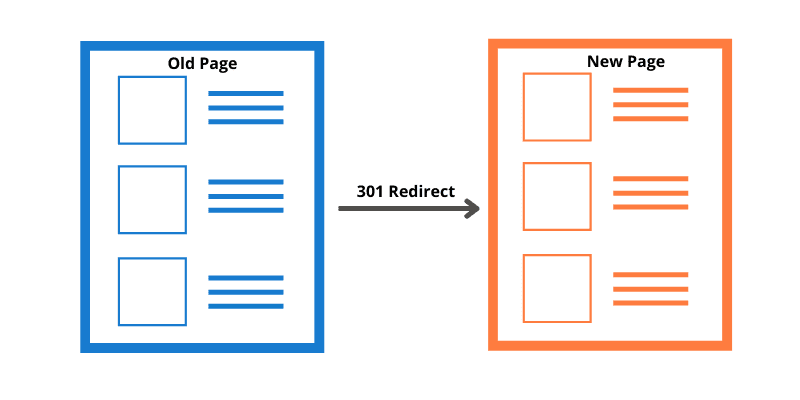Master the Art of Executing 301 Redirects for Better SEO Efficiency
Implementing 301 redirects is a fundamental aspect of website administration that can significantly influence search engine optimization efficiency. The capability to flawlessly guide website traffic from old URLs to brand-new ones is important for keeping search engine rankings and user experience. Nonetheless, mastering the art of carrying out 301 redirects includes greater than just standard redirection. It needs a deep understanding of ideal techniques, meticulous surveillance, and the capacity to repair usual issues that might occur. By diving right into the nuances of this process, site owners can open the complete capacity of their search engine optimization approaches and make certain a smooth transition for both individuals and search engines alike.

Significance of 301 Redirects
When thinking about internet site optimization, the significance of applying 301 redirects can not be overemphasized. A 301 redirect is a long-term redirect from one URL to one more. When an individual or search engine robot tries to access a page that has been redirected, they are automatically sent to the brand-new web page without recognizing it. This is crucial for keeping SEO worth as it makes certain that the link juice, rankings, and website traffic from the old page are moved to the brand-new one.

Establishing 301 Redirects
Given the vital function that 301 redirects play in keeping SEO value and boosting individual experience, establishing these redirects properly is extremely important for web site optimization. To establish 301 reroutes successfully, start by identifying the Links that require redirection. This entails understanding which web pages have been gotten rid of or transformed and mapping out the new destinations for these URLs. Next off, gain access to your web site's server to carry out the redirects. This can be done through server-side setups or utilizing plugins if you're utilizing a material monitoring system like WordPress. When producing the redirects, make sure that each old link is rerouted to the equivalent new link with a 301 condition code, suggesting an irreversible relocation. Furthermore, on a regular basis monitor the efficiency of your redirects using tools like Google Browse Console to determine any kind of concerns or mistakes that may occur. By diligently establishing and keeping an eye on 301 redirects, you can keep search engine optimization equity, boost customer experience, and make certain that visitors are effortlessly guided to the ideal web content on your web site.
Best Practices for 301 Redirects
To make certain optimum efficiency and maintain SEO stability, sticking to ideal techniques when executing 301 redirects is important. Additionally, it is suggested to utilize 301 reroutes instead of 302 redirects, as internet search engines translate 301 reroutes as an irreversible adjustment in address, transferring the Search engine optimization value to the new web page. By adhering to these best techniques, sites can successfully handle 301 redirects to improve SEO performance and customer contentment.
Monitoring 301 Redirects Efficiency
Effectively tracking the efficiency of 301 redirects is essential for keeping SEO efficiency and making certain a smooth individual experience. To keep track of 301 redirects efficiency, webmasters can make use of tools like Google Search Console to determine any kind of issues such as redirect loops, chains, or mistakes that may negatively influence search engine optimization rankings. On a regular basis looking for crawl mistakes and keeping an eye on the organic traffic patterns post-redirect application can provide important understandings into the success of the redirects.
Moreover, establishing correct analytics tracking, such as setting up particular goals or occasions in Google Analytics, can help determine the effect of 301 redirects on individual habits and conversions. This data can supply a comprehensive view of how users are engaging with the rerouted pages and whether the redirects are efficiently guiding Click This Link individuals to the intended location.
Continuous monitoring and analysis of 301 reroutes performance permit prompt changes and optimizations to make sure that the redirects are properly serving their objective of maintaining search engine optimization equity and offering a smooth surfing experience for individuals. 301 Redirect.
Troubleshooting Common 301 Redirect Concerns
Monitoring the performance of 301 redirects can expose typical concerns that might hinder their performance in maintaining SEO equity and customer experience. One prevalent trouble is redirect chains, where one redirect causes another in a series, creating delays in web page loading and potentially influencing search engine optimization rankings. It is vital to examine redirects consistently to determine and eliminate such chains. Another issue to keep an eye out for is redirect loops, where web pages reroute to every various other in great site an unlimited loophole, resulting in a bad customer experience and negatively affecting SEO. Validating redirect destinations is necessary to protect against such loops. Furthermore, improper application of 301 redirects, such as making use of momentary redirects (302) as opposed to long-term ones (301 ), can bring about shed SEO value. Making certain that all redirects are properly established up as 301 redirects is important for preserving search engine optimization equity. By troubleshooting these typical redirect problems without delay, internet site owners can enhance their search engine optimization efficiency and boost customer satisfaction.
Final Thought
In verdict, mastering the application of 301 redirects can considerably improve search engine optimization efficiency by maintaining site traffic circulation and maintaining search engine positions. By comprehending the significance of 301 redirects, setting them up properly, following ideal methods, monitoring their performance, and fixing common problems, internet site proprietors can ensure a seamless individual experience and maximize their online presence. It is vital for organizations to prioritize the proper application of 301 redirects to improve their total search engine optimization method.
Provided the vital duty that 301 redirects play in preserving SEO worth and enhancing customer experience, establishing these redirects appropriately is vital for website optimization - 301 Redirect. Additionally, it is recommended to use 301 reroutes instead of 302 redirects, as search engines interpret 301 redirects as an irreversible adjustment in address, transferring the SEO worth to the brand-new page. To keep an eye on 301 redirects performance, web designers can make use of devices like Google Look Console to determine any issues such as redirect loopholes, chains, or mistakes that might negatively affect Search engine optimization rankings. Furthermore, improper execution of 301 redirects, such as using short-term redirects (302) rather of long-term ones (301 ), can lead to lost SEO worth. Making certain that all redirects are properly established up as 301 redirects is crucial for maintaining SEO equity